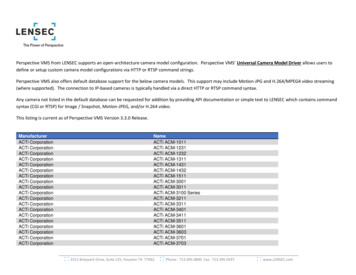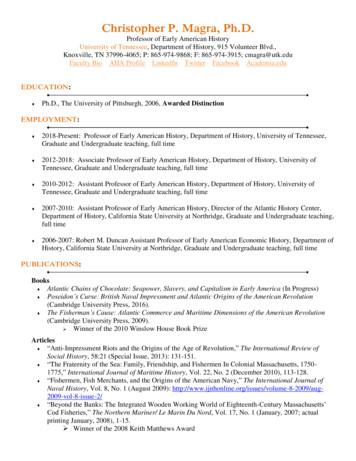Modern Maritime Communications
World Radiocommunication Seminar 2016Modern Maritime CommunicationsAidan JenningsTerrestrial Services DepartmentInternational Telecommunication Union
Overview of presentation1. Maritime Radio Communications2. Terrestrial systems3. Satellite systems4. Future maritime communication trendsQuestions
1. Maritime Radio Communications The Global Maritime Distress and Safety System (GMDSS),was implemented from 1992‐1999 GMDSS uses HF, MF and VHF terrestrial radio communications systems The International Maritime Organization (IMO) is in the process of modernizing the GMDSS,ITU has developed Recommendations and Reports to support this work 100,000 large commercial merchant ships and millions of other vessels use the GMDSS New mandatory systems have developed over the past 10 years; AIS Automatic Identification Systems, AIS uses VHF frequencies LRIT Long Range Identification and Tracking is a ship tracking and monitoring system SSAS Ship Security Alerting system, a mandatory commercial ship anti‐piracy alerting facilityIn addition the electronic‐navigation (eNAV) system is under developmentand GMDSS modernization is in progress
2. Terrestrial, (MMS) Maritime Mobile Servicecommunications Traditionally terrestrial maritime communications has used HF, MF and VHFfrequencies, for Morse‐code telegraphy, then radio telephony Radio telex was introduced (late 1960’s), then radio‐facsimile and NAVTEX, this workwas supported by ITU recommendations such as, (Recommendation ITU‐R M.1467) GMDSS introduced Digital Selective Calling (DSC) for automated watch‐keeping andalerting on HF, MF and VHF frequencies, supported by (Recommendation’s ITU‐RM.493 and M.541) These new systems led to a global revision of the maritime distress and safety systembetween 1987 and 1992 and the implementation of the GMDSS, which beganbetween 1992 and 1999 Automatic Identification System (AIS), (Recommendation ITU‐R M.1371) providednavigation and communications information, LRIT and SSAS were also introduced ITU studies and reports have supported all the work in these areas
E‐Navigation (eNAV),Electronic Navigation This concept is based on the interconnection of ships and shore facilities bycommunication links, including high speed broad band data links, to ensuresafe navigation particularly in coastal and high traffic areas To provide the mariner on board the ship and the Coastal state with high speeddata, to update information on computerized bridge displays in real time The system will allow vessels to be always on, connected to maritime electronichighways, particularly during passages through more sensitive high trafficcoastal areas and vessel traffic schemes (VTS) eNav is only partially implemented, it will encourage on board connectivity,eNAV is under development at IMO and ITU is cooperating in this work ITU Reports ITU‐R M.2122 and ITU‐R M.2092 support ITU’s ongoing work in thisarea
Future VHF Data Exchange System VDES, withterrestrial and satellite components A radio communication development in support of modern electronicnavigation concepts (eNAV), is the VHF Data Exchange System (VDES) It has the potential to provide many forms of data to ships, such as MaritimeSafety Information (MSI), hydrographic and environmental data, piracy andsecurity reporting, updating and monitoring of onboard systems (i.e. engineand cargo monitoring systems) A potentially new broadband communications system with up to 300kbps datatransfer. VHF Data Exchange System (VDES), which is based on the alreadyvery successful Automatic Identification System (AIS) , has the potential toprovide mariners worldwide with an effective low cost digital communicationssystem The (Recommendation ITU‐R M.2092) was completed at WRC‐15, howeverstudies are continuing on VDES, to fulfill spectrum requirements for thesatellite downlink component
Mobile phone systems. For decade’s coastal mariners, particularly fishermen and pleasure usershave been using mobile phone systems on board vessels Shore service providers have specifically located base stations inmaritime ports and along the coast line to take advantage of thislucrative business model In many coastal areas mobile phone 2G and 3G coverage extends outfrom 15 to 30 kilometers from shore. These stations are used only forcommercial calls Tests have indicated that with appropriate antenna and powerconfigurations 4G may have a range of up to 100 kilometers out to sea,providing LTE 4G data rates of 100 Mbps
3. Satellite systems, Maritime Mobile SatelliteService MMSS Cospas‐Sarsat and Inmarsat (are approved GMDSS service providers) Additional Commercial systems are; Iridium/HIBLEO 2, Thuraya, Thor–Telenorand Orbcomm Iridium/HIBLEO 2 is in the process of applying to become a GMDSS serviceprovider. Thuraya has also indicated that it may be interested in becoming aGMDSS service provider in the future It is estimated that over 100,000 vessels and over 8,000 oil and gas productionplatforms use some form of satellite service on board. In 2016‐about 400,000 maritime satellite terminals are in operation 10,000 Very Small Aperture terminal (VSAT) are used on board ships One example of VSAT maritime use is the cruise ship industry where VSAT’s areused as the backhaul for onboard mobile phone, picocell systems Some of the related ITU standards are; Rec. ITU‐R M.1478 and ITU‐R M.633
The use of satellite communications onboard ships The amount of commercial radio telephone traffic handled at coast stations hasdecreased as ships are connecting directly to offices onshore via satellite The need for the SAR (Search And Rescue) infrastructure has increased.People and property need to be rescued and secured, to save lives andprevent further environmental damage Many coast stations have become Marine Rescue Coordination Centers (MRCC)with their own integrated radio communications systems Other types of land based stations have also increased, Port operations, VesselTraffic, Pilot stations, Coast Guard etc. Satellite communications systems are being increasingly used on board ships forcommercial and safety related communications
Next generation Cospas‐Sarsat system Cospas‐Sarsat’s mission is distress alerting It already operates Low Earth Orbit Search and Rescue (LEOSAR) andGeostationary Earth Orbit SAR (GEOSAR) satellite systems It is based on the detection and location of 406 MHz distress beacon signals(i.e. Maritime EPIRB), it has been doing this successfully for decades Cospas‐Sarsat is in the process of upgrading to next generation satellitesystem; This component of Cospas‐Sarsat is known as the Medium‐altitudeEarth Orbit Search and Rescue system (MEOSAR) Positions will be available almost in real time with higher accuracy andwith an acknowledgement that the distress alert has been received10
Future application, Machine to Machine(M2M) in maritime via satellite Maritime Radio communications is developing, person to person Communication is now developing between computerized devices, thesedevices are talking to each other, machine to machine The bridge of every SOLAS convention (commercial) ship, of which there areabout 100,000 worldwide, currently contains on average 50 plus computersystems Throughout every ship there are hundreds more computers working tirelessly,they are embedded within communications, navigation, engine and cargomonitoring systems The future radio communications landscape will include the interconnection ofmany component devices onboard ships, with shore‐side networks Satellite systems can provide a wide range of machine‐to‐machine M2Mcommunication services, to monitor and correct onboard systems
4. Future maritime communicationstrends Existing systems are being improved and new technologies continue to emerge, thesedevelopments are in parallel with efforts to improve safety at sea, protect themaritime environment and move cargo efficiently Examples of these developments are; New satellite systemsThe transition to digital technologiesGMDSS modernizationDevelopments in eNAV and VDESMonitoring onboard systems using M2M technologies via satelliteIncreasing use of mobile phone systems in coastal areas The challenge is to provide seamless communications between ship and shore There may also be challenges in the area of cyber security and regulatory oversight
Thank youThere are four additional slides which provide additional information onmaritime related items at WRC‐15 and those under study for WRC‐19
Spectrum for on‐board communicationsagenda item 1.15 Background There was a problem of congestion in on-board UHFcommunications since only 6 frequencies around 460 MHz wereavailable for this purpose WRC-15 results no new spectrum was allocated, but measures were adopted formore efficient usage of existing frequencies (in modified No. 5.287): Introduction of new channeling arrangements of 6.25 kHz and12.5 kHz through Rec. ITU-R M. 1174-3, while retaining 25 kHzchanneling for analogue systems Recommendation to use new digital technologies, e.g. digitalcoded squelch Implications provides more channels for on-boardcommunications with the same amountof spectrum available, removes congestion
Automatic Identification System (AIS) inmaritime communications agenda item 1.16Background Development of new Automatic Identification System (AIS)applications, aimed at improving maritime communications andsafety of navigation, required additional frequency resourceWRC-15 results Enabling application-specific messages in AP18 chan. 2027, 2028;protection AIS by prohibiting chan. 2078, 2019, 2079, 2020 forships Identification of bands for terrestrial VHF Data Exchange System(VDES): 157.200–157.325/161.800–161.925 MHz in R1, 3 and157.200–157.275 MHz /161.800 – 161.875 in some R 2 countries secondary allocation to uplink maritime mobile-satellite service in161.9375–161.9625 MHz/161.9875–162.0125 MHz for satellitecomponent of VDES; downlink will be considered at WRC-19 VDES regional solution: identification of AP18 channels 80, 21, 81,22, 82, 23 and 83 for digital systems in Regions 1 and 3
Earth stations located on‐board vessels(ESVs)agenda item 1.8 Background 5.457A and Res. 902 (WRC-03) provide technical,regulatory and operational conditions under whichESVs may communicate with space stations of FSSin bands 5 925-6 425 MHz and 14-14.5 GHzResults of WRC-15 Possibility to use smaller (1.2m) antenna for ESVs transmitting in thefrequency band 5 925-6 425 MHz Resolution 902 (WRC-03) continues to applyBefore WRC‐15Frequency bandMinimum diameter of ESV antennaMinimum distance from the low‐water mark as officially recognized by the coastalState beyond which ESVs can operate without the prior agreement of anyadministration 5 925‐6 425 MHz2.4 m300 km14‐14.5 GHz0.6 m125 kmAfter WRC‐155 925‐6 425 MHz2.4 m1.2 m300 km 330 km14‐14.5 GHz0.6 m125 kmImplications Increased use and further development of ESVs in the frequency band5 925-6 425 MHz with sufficient protection to the terrestrial services
Maritime related agenda items for WRC 19 1.8 Consideration of regulatory provisions for updating andmodernization of the Global Maritime Distress and Safety System 1.9.1 Autonomous maritime radio devices operating in the frequencyband 156‐162.05 MHz 1.9.2 Satellite component of the VHF Data Exchange System andenhanced maritime radiocommunication 1.3 In relation to the protection of 406 MHz and 460‐470 MHz. 1.5 ESIM Earth Station In Motion Res. 158, on board ships.
2. Terrestrial, (MMS) Maritime Mobile Service communications Traditionally terrestrial maritime communications has used HF, MF and VHF frequencies, for Morse‐code telegraphy, then radio telephony Radio telex was introduced (late 1960’s), then radio‐facsimile and NAVTEX, this work was supported by ITU recommendations such as, (Recommendation ITU‐R M.1467)File Size: 372KB
maritime archaeology there is no clear-cut definition but overlapping designations. Maritime archaeology falls within the umbrella of underwater archaeology4 that particularly focuses on the preservation and reconstruction of maritime cultural heritage. 'Maritime archaeology,'
Key-Words: - Automatic maritime surveillance, ship detection, maritime traffic, maritime security. 1 Introduction Maritime surveillance had a major evolution with the improvement of synthetic aperture radar (SAR) images that can be acquired day and night, on all weather conditions, [1]. Until very recently, those
In this handbook, the Office of Maritime Communications will be referred to as the OMC, the Australian Maritime College the AMC, and the Australian Communications and Media Authority as the ACMA.
Axis Communications AXIS 215 PTZ-E Axis Communications AXIS 216FD Axis Communications AXIS 216FD-V Axis Communications AXIS 216MFD Axis Communications AXIS 216MFD-V Axis Communications AXIS 221 Axis Communications AXIS 223M Axis Communications AXIS 225FD Axi
Summer 2015 Volume 79 Catholic Maritime News . Bishop Boland dedicating the Roundel of Our Lady, Star of the Sea. Page 2 Summer 2015 CatholiC maritime NewS Catholic Maritime News is published by the Apostleship of the Sea (AOS) National Office 3 times a year – spring, summer and winter. United States Conference of Catholic Bishops .
ii RESUME Le Golfe de Guinée (GG) est un espace maritime de plus en plus en proie à l’insécurité maritime. La piraterie maritime, les vols à main armée à l’encontre des navires, le trafic
The New England Cod Fishing Industry and Maritime Dimensions of the American Revolution,” Enterprise and Society, Vol. 8, No. 4 (November, 2007), 799-806. “Faith At Sea: Exploring Maritime Religiosity in the Eighteenth Century,” International Journal of Maritime History, Vol. 19, No. 1 (June 2007), 87-106. “‘Soldiers Bred to the Sea’: Maritime Marblehead, Massachusetts and the .
Available for a number of programming languages. Reference implementation in PythonbyVladimir Keleshev. No longer necessary to write much code only: import docopt args docopt.docopt(_doc_, version _version_) The rest is documentation (and the code for actually using the command-line arguments) Finn Arup Nielsen 10 July 4, 2014. Python scripting Docopt example #!/usr/bin/env python .























